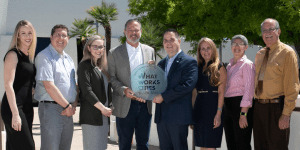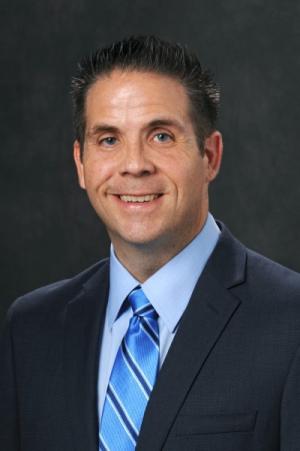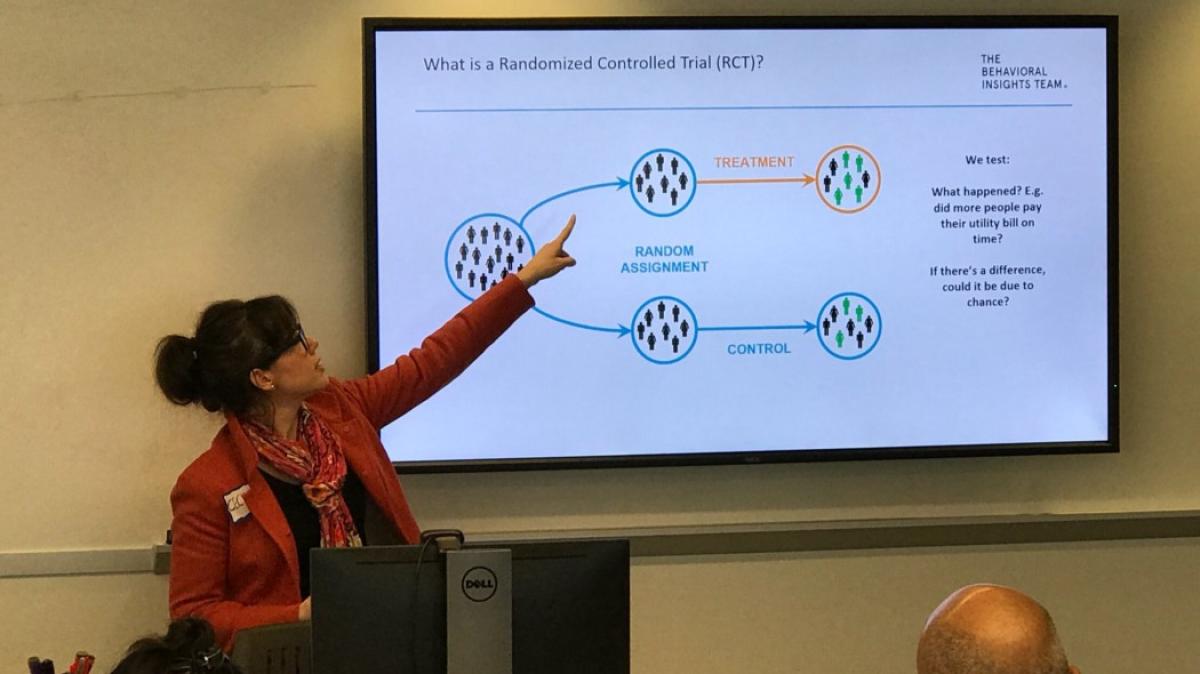Scottsdale shares its secret for data-driven success

Despite its modest size, Scottsdale, Ariz. — population 250,000 — is one of the best cities in the U.S. when it comes to using data to deliver better results for residents. It’s not only one of the 13 cities to achieve What Works Cities Certification as a well-managed data-driven local government, it’s also the smallest of those cities — by far.
Brent Stockwell thinks the secret to Scottsdale’s success lies in its team-driven approach. Stockwell is the city’s assistant city manager and longtime shepherd of its performance management strategy. He believes that by forming cross-functional, cross-departmental teams, drawing on people and skills from across City Hall, Scottsdale can drive expertise on everything from open data to using behavioral insights deep into the organization. As Stockwell likes to say, data is not 100 percent of any one person’s job in Scottsdale — it’s a significant part of everyone’s job.
Bloomberg Cities caught up with Stockwell to hear more about Scottsdale’s approach and what other cities of all sizes can learn from it.
How did Scottsdale get started in this area?
The first thing for people to realize with What Works Cities Certification and all the component pieces of it — whether it’s performance management, open data, low-cost evaluation, or repurposing for results — is that these are all organization-change initiatives. And if you really believe in this, you want to make sure you are on a regular and systematic basis changing the entire organization to shift in a different direction.
It’s a massive effort. Even for a mid-sized organization like ours, we have — between elected and appointed officials, city staff and thousands of volunteers — more than 8,000 people to try and get on the same page.
When we started this effort to change our organization back in 2009, one of the first things I did was to pull together a team full of representatives from different departments, people who have aptitudes and interests or background in performance management, change management, strategic planning, process improvement, data analytics efforts, and get them involved in advising on that.
I’m a huge fan of building cross-functional, cross-departmental teams to lead these kinds of strategy and performance improvement efforts. The mantra is that it’s not 100 percent of anyone’s job — it’s part of everyone’s job.
Why is that mantra important?
Below the CEO, whether in your city that’s the mayor or city manager, you have this cadre of long-time employees. And those are the ones who are going to carry on and sustain those efforts for the long-term.
Too often, we see organizational change initiatives last only as long as that mayor or city manager is there. If you’re really in it for the long game, you have to get to those employees and get them passionate about it and develop their skills.
What teams are driving Scottsdale’s data work now?
We’ve had four teams in place for a couple of years now.
One of our teams looks at our quarterly performance reporting process and our benchmarking efforts. Then we have an open-data team working on advancing the practice and prevalence of evidence-based decision making in our organization. There’s a process improvement team that goes out and helps other departments identify processes in need of improvement and walk them through how to do it. And last but not least is our behavioral insights team. That’s a cross-departmental team led by Cindi Eberhardt, who we call our “behavioral insights ninja warrior.”
Megan Lynn leads the effort as head of what we call the High Performance and Innovation Team, and I’m now more the organizational champion for it.
Take the team working on behavioral insights. Who’s on it? What do they do?
It’s people from a bunch of different departments: the person who leads our federal housing and community development block grant efforts, our communications and public affairs director, our police planning and accreditation manager, our solid waste customer service manager, our business intelligence manager, one of our analytics and budget staff members in our community services division, and a senior management analyst in public works, as well as our web services manager.
They’ve gone through a training we had with the Behavioral Insights Team, or BIT. And they’re passionate about encouraging the use of behavioral insights to improve city programs and services, but also to coordinate behaviorally informed randomized control trials to test and improve performance and find out what really works.
They meet once a month, and have subteams that do work throughout the month. And they’ve done a variety of things, such as improve messages to increase donations to seniors and other people in need.
And Cindi, the team leader: What’s her day job and her role with behavioral insights?
Cindi’s day job is to increase and coordinate and ensure that there are proper controls around participation of almost 6,000 volunteers we have in the city. But in addition to that, she’s coordinating this behavioral insights effort.
[Read our explainer: What is a behavioral ‘nudge’?]
We don’t have a behavioral economist or an industrial psychologist on staff or a Ph.D. She keeps up on the latest research about behavioral insights. She’s out looking for opportunities to talk with department directors about initiatives the council wants them to work on, or problems they’re having, to see whether those can be opportunities for a behavioral insights project.
And she’s making sure we’re following the processes set up when we had BIT come out to do the boot camp, to make sure we’re using our resources appropriately, and to have people with knowledge of statistics to look at the methodology.
And all this work, by the teams and the team leaders — it falls into the ‘other duties as assigned’ in their job descriptions?
Yes, it’s kind of a joke around here, that ‘other duties as assigned’ is Scottsdale’s strategy for achieving What Works Cities Certification. But as much as this is about organizational performance improvement, it’s also about individual growth and development. Organizations are comprised of people, so the more you can get individuals better at these skills, you’re improving the organization’s capacity to do these types of things.
Each of the team leaders is a high-potential, high-performance person in our organization, and we’re trying to build their capacity so they’re ready to step into leadership and management roles in the organization.
How do you think about the kind of mix of people and skills you want on a team?
A lot of times in organizations, people get picked for problem-solving teams because of their position, title, or role in organization structure. And we’ve found that’s not always the best way to build teams.
[Read: ‘Teaming’ in and out of City Hall]
We talk about looking for your individual superpowers. Some people are really good at talking and working with people, Others are really good at process. Some are good at diving into details, while others are great at the big picture, and keeping the long-term goal in mind. And still others, their superpower is follow through — you ask them to do something and they’re going to go out and do it. The ability to storytell, to do data analytics, to be a team leader, to put yourself into other peoples’ shoes from a user-design perspective — all those superpowers and skills are needed.
The reality is the key elements of the What Works Cities Certification process are so broad that you can’t expect any one person to do it. The skill set for keeping an open data portal up is different than the skill set needed for someone doing data inventories across a wide variety of departments, which is different than the skill set needed to analyze data. These are all different skill sets just within that open data area, and that’s why the team approach is helpful, because you can bring a broader variety of people to the work.
How do you make sure there’s organizational buy-in for this work?
One important tool we use is developing an annual action plan for the team. Each year, we highlight some of our accomplishments, identify our priorities for the next year, lay out who the team members are and which divisions they represent, and lay out a team structure of ad hoc and ongoing teams.
We ship that up to the executive leadership team of the city and say this is the action plan we created, take a look at the team members on it, make sure they’re still the right team members or if there’s someone you’d like to add to it, take a look at these efforts, make sure they’re the right efforts for us. We’ve built into the annual cycle or cadence of what we do in the city to get that executive approval for what we’re doing and then allow the team to carry it out.
What makes Scottsdale’s model something for other cities to pay attention to?
A small city might not feel like they have the resources to dedicate a chief innovation officer or a chief data officer or a chief performance officer. But maybe they have an assistant to the city manager, or a chief of staff, who can spend some of their time doing this, and build a team of folks in the organization that can spend some of their time doing it. And that can help them improve.
At the same time, in larger cities, that Chief ‘X’ Officer may feel frustrated that they can’t get as much accomplished as they think they need to. And maybe what they need to do is to build this kind of team of folks from across the departments to advise them, because they’re out in the organization and know what’s likely to work and what’s not going to work.
We have been doing this through four different city managers, and kept the initiative moving and improving year after year. One of the guiding principles we built in was it needs to be transformative throughout organizational transitions. It’s been a huge piece of our success. I’ve seen a lot of other organizations have peaks and valleys on this work because stuff gets so tied to the CEO or leader instead of building it into the organizational DNA.





